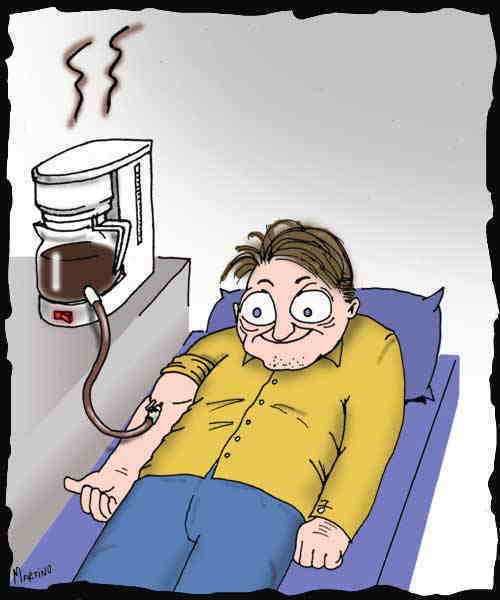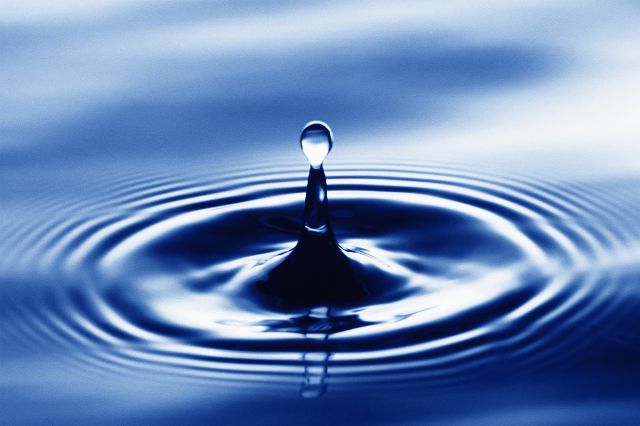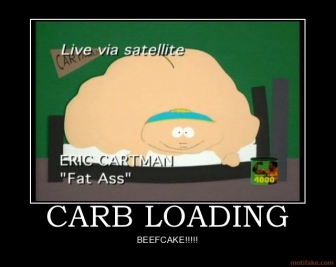Easy Nutrition Switches For Impressive Gains
I know I don’t really talk about nutrition on this site very much. Probably because I tend to focus on the mechanics versus the chemistry. Let’s face it, if I knew chemistry better I’d be a doctor by now, but I don’t, and I like lifting heavy things, so I decided to focus on getting injured people to lift heavy things and become super-human.
Now we can get as deep into nutrition as we want, analyzing the difference between omega 6 and omega 3 fatty acids, and how the ratio of fats was 1:1 40,000 years ago and now it’s more like 50:1 and a big reason a lot of people are fat and dying, but I figured I’d set the bar low for this one. We’re going to look at a few simple nutritional alterations and habits to form when looking to lose weight and gain mass. Cuz hey, we all want to look rockin when naked time rolls around with our significant others.
#1: Drink more Water
Our bodies are made of over 70% water, and in the span of a single day we can burn through 2 litres without any physical activity. Replacing the water helps keep your systems working properly, specifically the enzymatic and metabolic reactions necessary to release stored fatty acids and mobilize them for energy by working muscles, and to make proteins lay down in new tissues.
Most people should be getting at least 3 litres of water a day. If it’s warm or you work out and sweat thinking about the warmup you should take in closer to 4-5 litres, and yes, coffee and tea count. The diuretic effects of caffeine have been greatly over-exaggerated. If we were to believe some people who claim that a single cup of coffee would lead to shedding a litre or two of water, then everyone who lined up at Timmy Ho’s would be lined up waiting to use the can, too. We’d also have long haul truckers using permanent catheters, night-shift doctors needing a clean-up in aisle 4, and work would never get done in offices unless you set up desks at urinals.
#1.A …….And add some lime juice to it
Lime juice has a benefit of stimulating production of hydrochloric acid in the stomach to aid digestion, but also alters your pH by making it slightly more alkalytic (opposite of acidic), which helps promote an anabolic environment for muscle growth and tissue repair. Combatting the effects of cortisol and stress is priority #1 for anyone looking to lean out and add muscle, so this easy step should be a no-brainer.
#2. Eat More Muscle To Gain More Muscle
In ancient societies, soldiers would eat parts of animals in hope of gaining their qualities: the heart of a lion to become proud and courageous, the liver of the buffalo to gain strength and speed, and the brains of deer to stay light and fast. Notice how nutrient-dense foods were used for performance outcomes? You never heard of a Spartan warrior saying “just give me a whole grain chicken breast sandwich with light mayo.” God, I think my testosterone just dropped 8.23% just typing that, and yours probably decreased by a percent or two by reading it. Sorry about that.
High protein foods are necessary to add muscle, and they work as great calories in replacement of higher carb foods that will prevent you from leaning out. Meats are the way to go, as they give you the protein, but also a complement of other minerals and vitamins, depending on what animal you’re gorging on.
For the vegetarians out there saying “Well I don’t eat meat, so I’ll get my protein from soy.” Sure, go for it, and enjoy your man-boobs at the same time. Soy has a lot of compounds that tend to result in an increased production of estrogen-producing cells within the body, so have fun with that.
 A great coach once told me “There’s nothing wrong with a vegetarian diet as long as you add meat to it.” Wise words indeed.
A great coach once told me “There’s nothing wrong with a vegetarian diet as long as you add meat to it.” Wise words indeed.
#3. Sugar and Grains Should Be The Megatron to Your Optimus Prime
If you didn’t understand that reference, I’ll have a lady-friendly version take you home:
Sugar and Grain are the Aleksander Petrovsky to Carrie Bradshaw’s Mr. Big
Feel better? Now give me my man card back.
Sugar’s an easy one to understand, since it wreaks havoc on blood sugar and insulin receptor sensitivity, and leads to more fat storage than fat burning. The best amount is none, and it gets worse the more you eat.
Grains are a tricky one. I have no problem with actual whole grains, grown organically, and not processed. The packages of Quaker Oatmeal are as far away from natural as you can get a grain. The downside comes when you look at the production process. Grains are stored in silos on farms, which also have a propensity to house mice and rats. They like to pee and poop in their homes, which for the time being is your morning loaf of breakfast. The excrement seeps into small cracks on the grains and gets missed when it gets washed, and the only way to eliminate it entirely is to bleach the grains when they’re turned into flour (also killing a lot of nutrients and de-saturating the starch to make it more of a simple carb than a complex one), otherwise you’ll tend to have a few drops of Mickey and Minnie with your meals.
Also, they tend to be calorie-dense foods that aren’t readily burned off with our sedentary lifestyles. Sure, they were necessary in the industrial revolution when a work day involved being in the field for 10 hours and you needed a few extra calories to get through the day. Today? Not so much. The only time a high (er) carb diet may be necessary is when endurance athletes are in their peak mileage phase, or you’re playing a highly aerobically based sport (basketball, hockey, football, soccer) for multiple workouts each day.
For most foods that you can buy at the local grocery store, there is no more mis-leading phrase that you can see like “Fat-Free.” Sure, they may reduce the total number of grams of fat, but in order to make the food not taste like competitive eating champion Takeru Kobayashi’s post-comp farts, they either load it up with sugar, starch or salt. But het, it’s low fat, right? That will make you lose fat, won’t it??
A funny thing has happened in society over the last 50 years since the “eat low fat” mantra came in from the cardiologists who were working on a lot of heart attacks and finding correlations between fat intake and risk of heart disease. When they came out and said to eat a high carb and low fat diet, there weren’t many obese people in the world. Now, with close to 50% of the population not able to positively identify their own penis without a couple of mirrors, we’re finding out that high-carb diets weren’t really the answer.
What we do see is that diets composed of a variety of different fats (except trans, that shit’s just plain weird), the people have a greater compliment of foods eaten, better nutrient profiles, and a lower incidence of disease, regardless of physical activity patterns. On top of that, fats are much slower to digest, and tend to leave you feeling fuller longer, which means portions become more manageable than on high-carb diets.
#5. Eat Breakfast
I know there are some “intermittent fasting” folks out there salivating at this one, wanting to jump all over the comment button and get all uppity about someone saying you should eat breakfast. Deal with it.
Here’s the big take-home point. Just like bad meals can wreck your diet, missing meals can wreck it too. As can eating a meal made of the wrong things. Somewhere down the history of breakfasts, we came to associate them with nothing but starch and sugar. Cereals, pancakes, waffles, granola, syrups, and powdered sugar get you in a nice little sugar high to start the day, followed by an insulin crash right around the time you hit rush hour traffic, leaving you reaching for the pot of coffee to straight-line into your left ventricle. Sound familiar?
 By eating a breakfast, you set your body up for the rest of the day, and just like a missed bowel movement, a missed breakkie can make you feel like crap for the rest of the day. Face it, we’re circadian rhythm creatures who have set patterns with each cycle of the sun, and eating in the morning is one of them. However, our high-carb meals have to be replaced. With wat? Well, there were a few things I mentioned earlier that we need copious amounts of. Primarily meat protein and water. Charles Poliquin extols the virtues of a meat and nuts breakfast, and although I’ve never had the guts or the stomach to get into eating some freshly cooked bison or elk in the am, I’m able to understand why it works. The protein and complement of good quality fats, plus all their associated micronutrients can make for a powerful combination to star the day, with a longer influence than a cup of coffee on energy levels from all the B vitamins.
By eating a breakfast, you set your body up for the rest of the day, and just like a missed bowel movement, a missed breakkie can make you feel like crap for the rest of the day. Face it, we’re circadian rhythm creatures who have set patterns with each cycle of the sun, and eating in the morning is one of them. However, our high-carb meals have to be replaced. With wat? Well, there were a few things I mentioned earlier that we need copious amounts of. Primarily meat protein and water. Charles Poliquin extols the virtues of a meat and nuts breakfast, and although I’ve never had the guts or the stomach to get into eating some freshly cooked bison or elk in the am, I’m able to understand why it works. The protein and complement of good quality fats, plus all their associated micronutrients can make for a powerful combination to star the day, with a longer influence than a cup of coffee on energy levels from all the B vitamins.
Easy changes, but one’s that will make a world of difference in your ability to gain muscle and lose body fat. Plus, the number of doors that open up with certain types of foods (different meats, nuts, beans, legumes, etc) means there’s a lot of variety possible to keep you interested and make sure you don’t get bored, plus the addition of a few extra ab muscles under your shirt will make it all worth while.


9 Responses to Easy Nutrition Switches For Impressive Gains